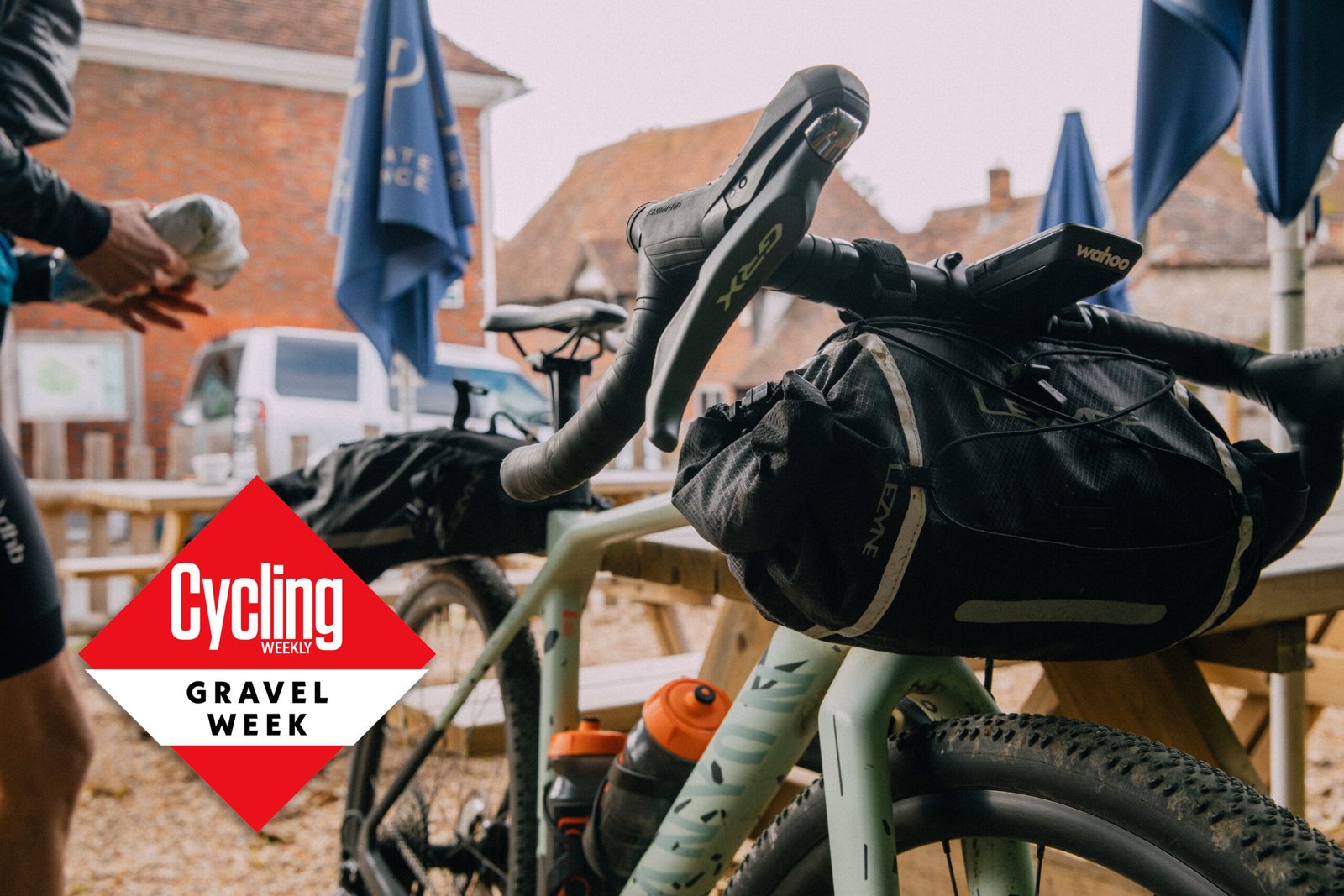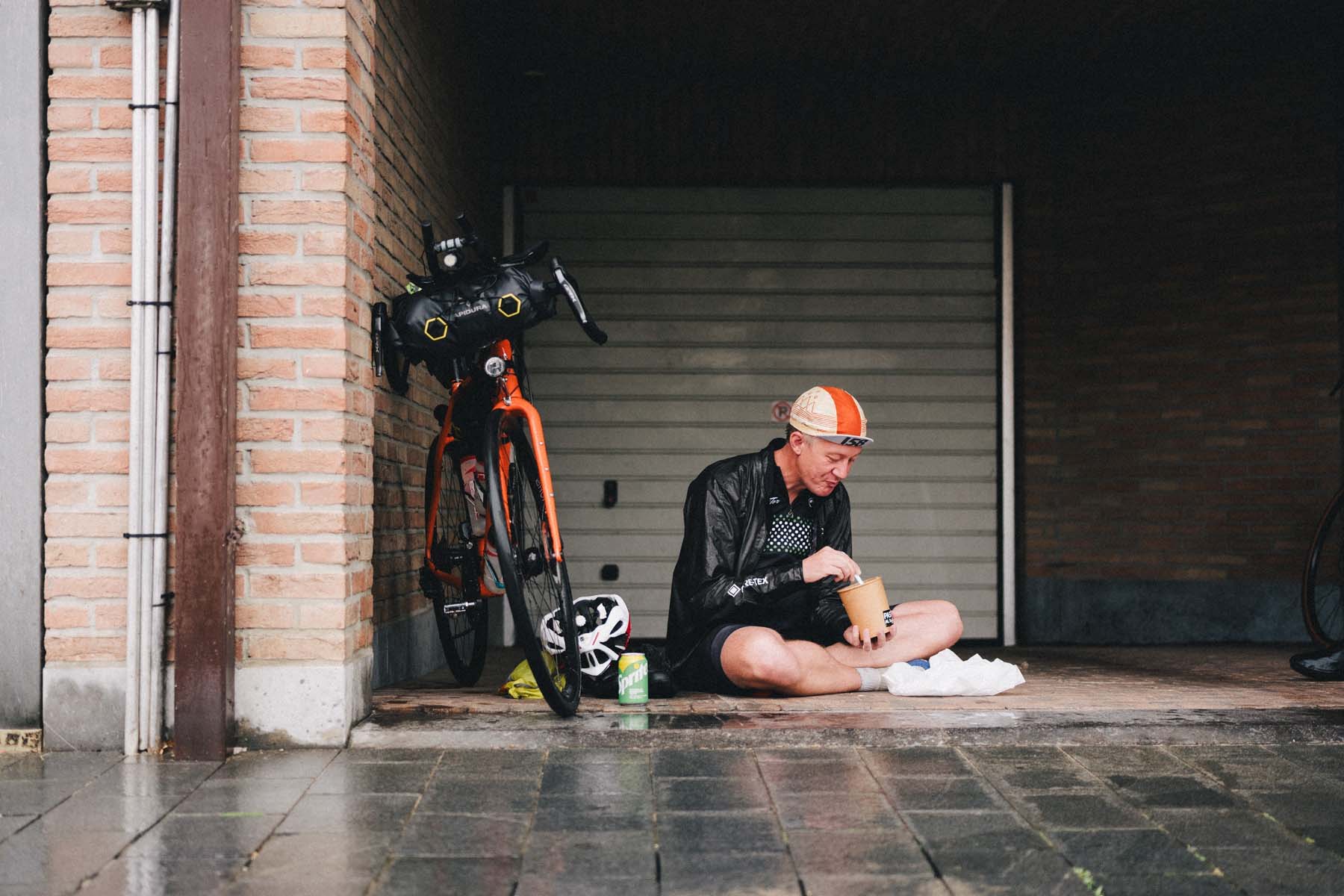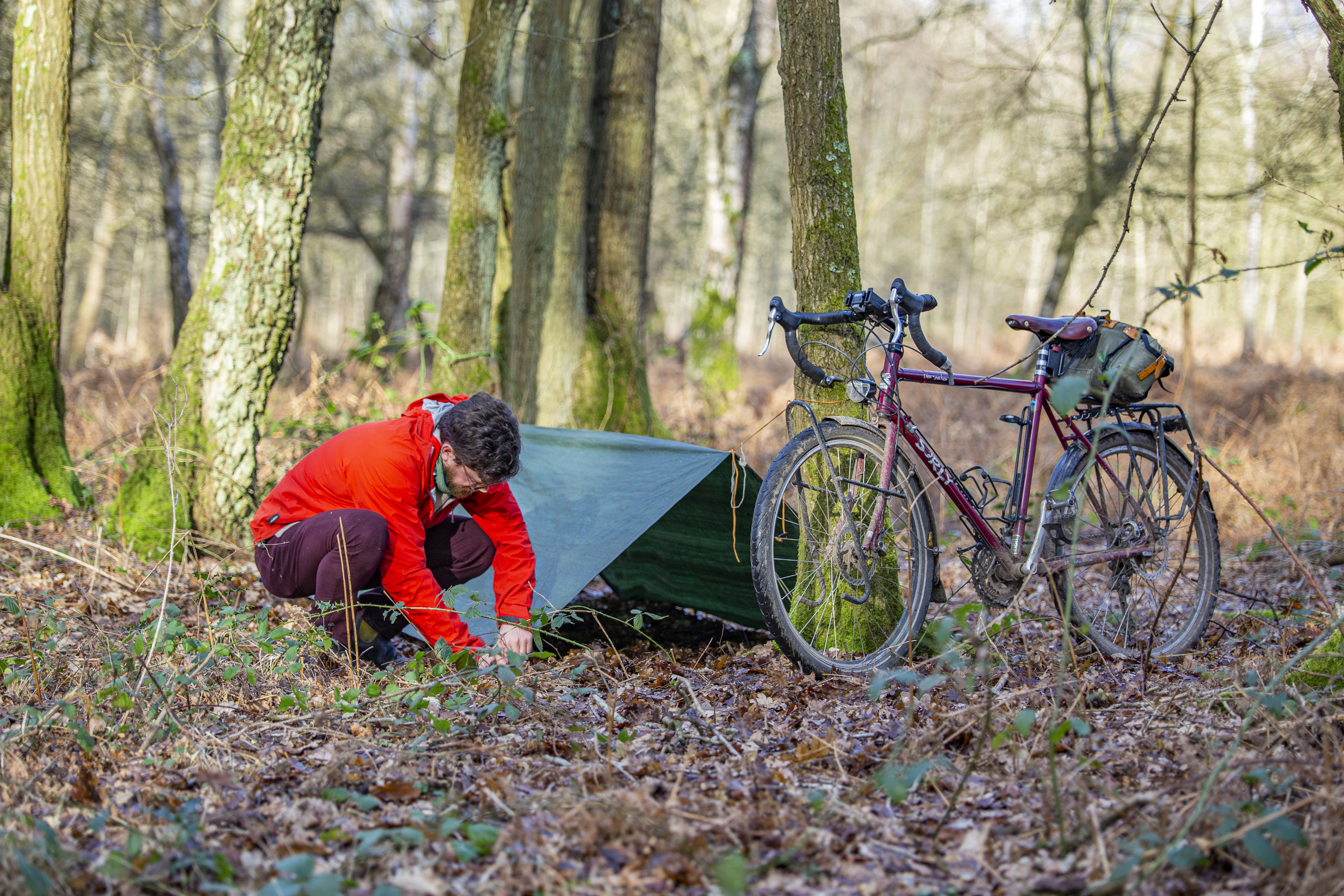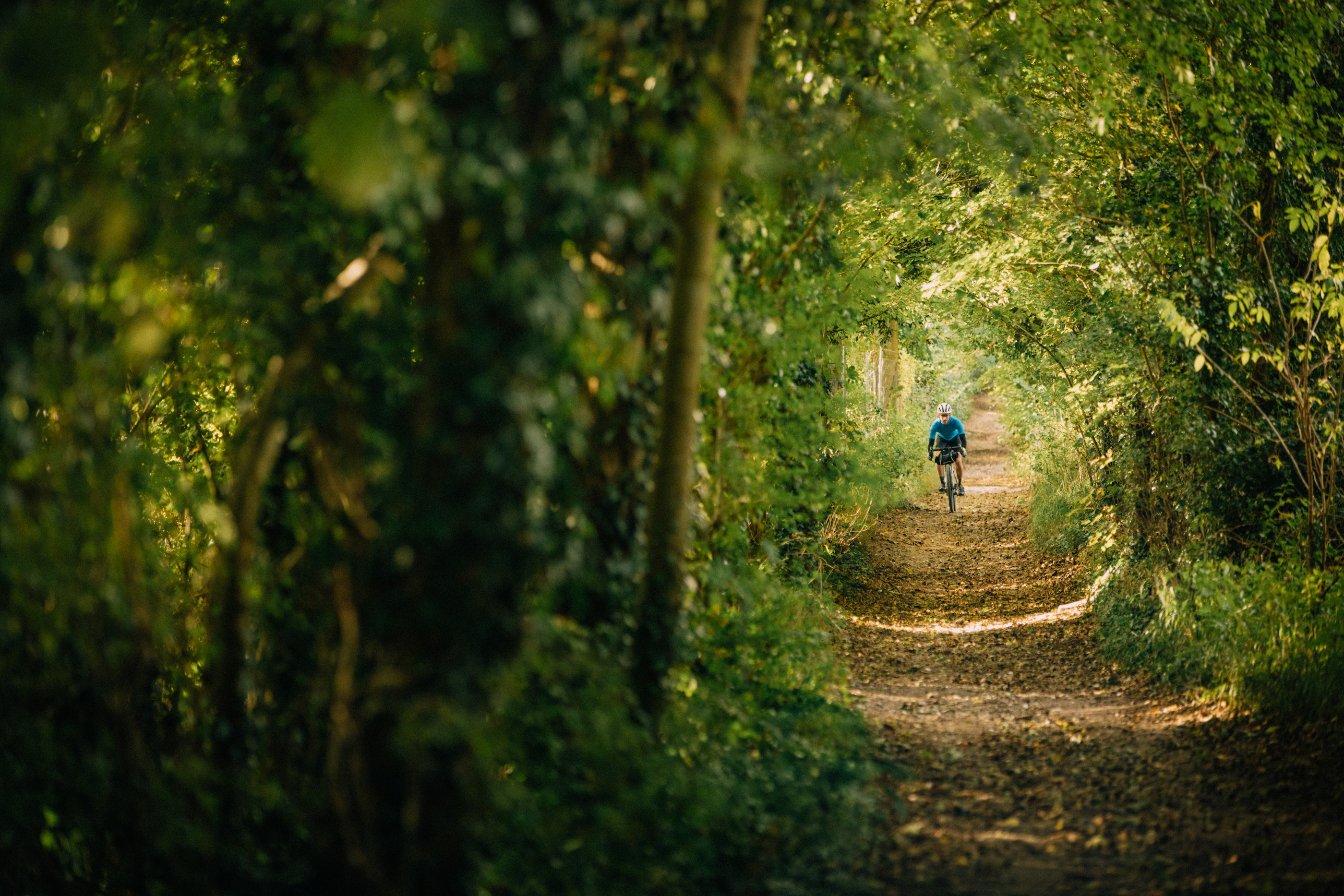
“I hate to be the bearer of bad news,” bellowed a hirsute man in black sunglasses, and long-sleeve red-and-white t-shirt with a giant logo for Happy Bottom Bum Butter, “But you’re gonna die. So live life like you’re gonna die. ‘Cos you’re gonna.”
This wasn’t what I was expecting to hear at the start of a pre-race briefing. But there in front of me, quoting William Shatner from the top of table at a Dorset pub at 7 am was Charlie Hobbs. Founder of Happy Bottom Bum Butter (a natural chamois cream favoured by many Olympians), it was Charlie introduced overnight gravel rides to British shores in 2016 with the Dorset Gravel Dash.
Unsurprisingly, this type of event had grown a small, but lively scene in the US. And now it was over here.
With that tongue-in-cheek quote borrowed from the man who made Captain Kirk a cultural icon, Charlie managed to cut through all the BS we put ourselves through ahead of a big ride that sits outside of our comfort zone. In doing so, he immediately put the assembled riders (self included) at ease and cleverly rendered pointless many of the questions we all had.
We all have questions ahead of an event. Especially if it’s new to us. ‘Am I fit enough?,’ ‘Have I got the right bike?, the right clothing?’, ‘Have I packed too little, too much, the right kit?”, “Where am I going to stay?”
All of this is essentially shorthand for: “What the hell have I let myself in for?” It’s only natural to ask these questions, and it’s only natural for an event that involves sleeping out overnight to bring up more of them.
But don’t worry, Cycling Weekly has your back. We’ve spoken to the experts to help put you at ease and, hopefully, lure you into the wonderful world of bikepacking.
You don’t need as much kit as you might think for a night under the stars
(Image credit: Sam Jones)
What sort of training do I need to do?
Training is at the top of a lot of people’s minds before embarking on the overnight rides, and it seemed only right to start with Charlie’s sage advice.
The latest race content, interviews, features, reviews and expert buying guides, direct to your inbox!
“Training is for losers. 99% of people who train for a race don’t win. So, on the big weekend a steady as she goes approach will see you alright. Just keep on keeping on, and eat, don’t train – keep your tank full,” said Charlie.
Whether you’re racing or riding for fun, fuel is essential and shouldn’t be overlooked. It’s unlikely if you’re considering an overnighter gravel ride that you’re starting fresh to the world of riding.
You’ll have a good idea of what you’re capable of, how far you can ride and just need to trust in yourself – and the way to keep the faith is as Charlie puts it to “keep your tank full”. He’s not alone in this point of view. Riders who compete in the UK’s 24hr time trial event jokingly refer to it as an eating competition on two wheels.

Shelter can be found in most places
(Image credit: Transcontinental)
Fuelling the tank
Someone who knows about keeping themselves fuelled on the go is Vedangi Kulkarni; an explorer and writer who set up the Adventure Shed, a consultancy that helps people plan their trips.
When I spoke to her, she was four days short of completing her second circumnavigation of the world by bike and riding through the searing heat of an Indian spring. Understandably, keeping properly fuelled was at the forefront of her mind.
“With nutrition and hydration, don’t try anything new when you’re on your big trip.” She told me as I heard her tyres hissing on the road and lorries roar by. “Keep to the tried and tested – whether that’s electrolytes on your ride, or a dehydrated meal at the end of the day.”
What about the kit?
Overnighter’s are more than a ride as there’s also the camping aspect to consider, which means working out how you’re going to load up your bike.
What kit you need depends on you, your bike and whether you’re camping (and if camping are you bivying, using a tent, hammock…), if you’re planning on cooking and whether you’re riding solo or with others. It’s a lot to consider and most people will spend years dialling in their system to find what works best for them.
There’s a bewildering array of types and styles of luggage to try with your gravel riding – what started once upon a time with the minimal ethos of Transcontinental founder and endurance rider Mike Hall with minimal dry bags strapped to your frame, has now gone full circle with racks, panniers, saddle bags and even baskets making regular appearances in the gravel scene.
Whatever set up you go with, the message is clear: “Test your kit,” says SRAM ambassador Rachael Walker who is part of Sisters in the Wild, a community focussed on making gravel adventures accessible for women, non-binary and trans riders.
“Testing heading out on your first overnighter means working out what can fit in your bags, how to reattach the bags again and importantly – do they wobble or rub!”
Vedangi agrees and points out the importance of learning from your mistakes too.
“If you’re thinking you’re carrying too much and your bike is too heavy – go with that setup and do what you have to do,” urges Vedangi. “But then come back from this journey and look at what you did and didn’t use, and then take out what you didn’t use – minus your first aid kit – for next time.”

A gravel bike will come with fittings to carry as much kit as you need
(Image credit: Sam Jones)
Campside considerations
For some (self included), these overnighters are as much about the mid-ride fun of the camp as the ride itself. I enjoy the challenge of cooking outdoors, and have found practicing on shorter day rides pays off on the big rides, culminating in a porcini risotto presented to fellow riders at Cape Wrath following a long wet day in the saddle – those moments are worth savouring and prepping for.
Stef Amato bikepacker and events lead at Brooks England, renowned for laying on campside feasts and coffee long pours, agrees. “Having something to look forward to at the end of a ride, especially with pals around the camp table, is always a highlight for me on trips,” he says. “With 100g gas canisters and minimalist, lightweight stove-pot sets, there is no reason not to cook up a storm.”
Save on washing up and faff by keeping things “one pot” like risotto and stew suggests Stef, take inspiration from local dishes and always leave space for picking up local produce – or take a musette if space is limited.
And of course, “Make sure you’ve got something to wash it down with! Even packing a little bottle of cordial is enough to jazz up bidon-bottle water.”

(Image credit: Future)
Preparing for the night out
Camping is often where many fledgling overnight riders feel the most anxiety, especially if you have never done stayed outside of a campsite. Katherine Moore, cycling journalist and author of Gravel Rides: South West England answer is, “Choose a location near home or somewhere you know well for the first time out.
“Riding in a place that’s known to you can certainly still be an adventure; but it’ll let you focus on the overnight element without also having to think about practical elements such as where to pick up supplies, and navigating cultural differences.”
Rachael Walker also suggests keeping an eye on the weather, and preparing accordingly with suitable clothing and equipment like a hot water bottle if you feel the cold, “For your very first overnighter it’s important to be comfortable and enjoy the night or the chances are you might not want to head out again.”
Theres the rub. Gravel overnighters are experiences that are beyond the ride and worth doing in the right way for you.
Get that right and you’re in for a smorgasbord of fun, that will take you to stunning locations, witness the familiar in unfamiliar ways. You’ll join a vibrant and welcoming community and in doing so create memories to stay with you to your last days. So what’s stopping you?

